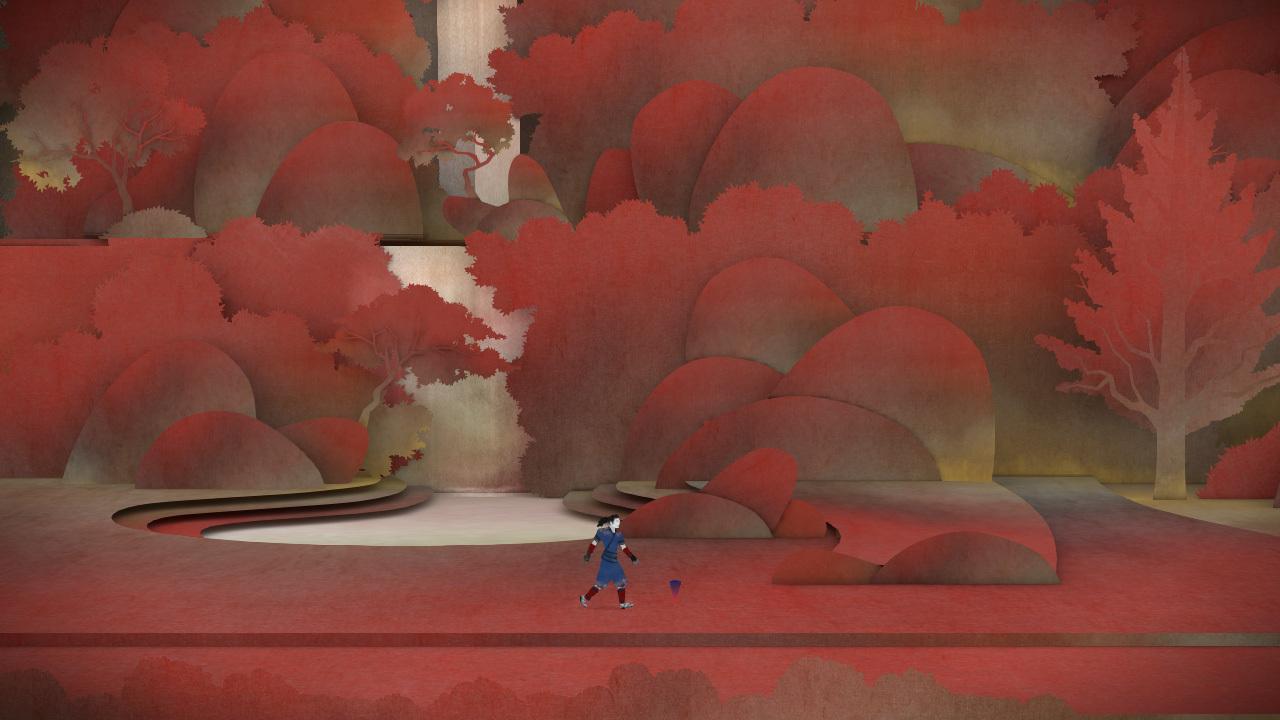The graphic version of this critical play can be found here.
The mechanics of Tengami’s puzzles, with their paper-folding interactions and serene pacing, create a uniquely meditative gameplay experience that reflects a broader trend in the adventure puzzle genre towards incorporating unique art styles and mindfulness. Tengami is a puzzle game released in 2014 and developed by Nyamyam that is playable on platforms such as iOS, Android, Windows, Mac, and Wii U with a target audience of players ages 12 and up. It follows a man’s quest through an ancient Japanese-inspired pop-up book as he attempts to recover cherry blossoms to restore spring to a barren land.
The core mechanic of Tengami revolves around the manipulation of a beautifully crafted paper world, mimicking the art of origami and the surprising nature of pop-up books. Players interact with the environment by folding, unfolding, and sliding parts of the paper landscape to uncover hidden pathways, solve puzzles, and progress through the game. For example, in the beginning of the game, the player must swipe over a section of a river in order to ‘flip’ the paper and reveal a bridge, demonstrated by the images below. The act of folding and unfolding paper to reveal new pathways and secrets creates a sense of wonder and discovery for players.


This sense of reflection is mirrored in the serene world’s puzzles, designed to be contemplative rather than challenging, similar to the concentrative and careful nature of folding origami in the real world. Guided by gentle pulses and rings of light, players are forced to walk at a leisure pace, requiring them to observe multiple elements of the game, including the environment and sound, to carefully and creatively think about how to manipulate the paper structures to achieve their goals, enforcing feelings of discovery and sensation. Some examples of these can be found in the images below. The first puzzle, one of the most frustrating for me personally, involved repeatedly rotating through multiple environments to create a path for the character to progress to their final destination. The second puzzle, closer to the beginning of the game, required pulling tabs of wind chimes to calm howling wolves. The trick was to pull the wind chime tabs in order from lowest to highest pitch, adding harmonies to the game’s tranquil and resonant soundtrack. Lastly, one of the final puzzles involved counting the number of different symbols throughout an island, many of which were hidden within the folds of the paper, like the two dark crescent moon patterns in the bottom left corner of the corresponding image. This puzzle was so challenging that I eventually referred to a walkthrough. These design choices align with the game’s overall aesthetic and narrative, emphasizing tranquility and reflection and allowing players to appreciate the beauty of the game’s art and music without the frustration that often accompanies more challenging puzzles.



Furthermore, the integration of Tengami’s game architecture blends loops and arcs in a manner that enhances its meditative quality. The loops consist of the repetitive task of solving puzzles by manipulating the paper world, providing a sense of routine and mastery. Each time the player returns a cherry blossom to the barren tree, a transformation in the environment occurs, as shown by the images below, adding a layer of progression and change that embodies the game’s arcs. This continuous return to the tree and the subsequent changes in the surroundings reinforce the narrative journey, offering visual and thematic rewards for the player’s efforts. The careful balance between these loops and arcs ensures that the gameplay remains somewhat engaging without sacrificing the tranquil, contemplative experience that defines the game.


As aforementioned, the game stands out in the puzzle game genre through its unique integration of a singular art style and a focus on mindfulness, reflecting a broader trend seen in contemporary puzzle games. Unlike the high-paced, complex challenges found in games like The Witness or Portal, Tengami’s mechanics center on serene origami and paper-folding, an emphasis akin to the Penorose art style of the popular Monument Valley, which uses Escher-like architecture to create visually captivating puzzles. Moreover, Tengami’s slow, deliberate pacing and ambient soundscapes promote a meditative state similar to that found in Journey or Flower, where the gameplay is designed to be as calming as it is engaging. This trend towards combining art with mindfulness practices in puzzle games not only enriches the player experience but also broadens the appeal of the genre, making it accessible to those seeking relaxation and contemplation as part of their gaming journey.
Despite its strengths, Tengami is not without its critiques. One major point of criticism from me is the game’s length, given that I was able to complete it in its entirety within an hour. Furthermore, I thought the the puzzles, while beautifully integrated into the pop-up book theme, sometimes lacked the depth that could fully utilize the potential of the origami-inspired mechanics. For example, some puzzles involve simple tasks like rotating circles or pulling tabs to manipulate the water levels in a well. Additionally, the slow walking mechanics and the continuous need to travel back and forth between locations, while enhancing the game’s meditative quality, tested my patience, leading to many moments of frustration.

In conclusion, despite its short length and occasionally shallow puzzles, Tengami’s tranquil pacing and aesthetic beauty offers a refreshing and calming experience. The game’s emphasis on reflection and discovery, combined with its ambient soundscapes and peaceful landscopes, presents a noteworthy example of how art and mindfulness can enrich the puzzle game genre.



